- +1 858 909 0079
- +1 858 909 0057
- [email protected]
- +1 858 909 0079
- [email protected]

Sample preparation is the most critical step in every analytical technique, such as food analysis, bioanalysis, forensics, toxicology, environmental monitoring, and so on. Many different contaminants are present in or created throughout the biological sample preparation. These contaminants include DNA, RNA, lipids, Endotoxin, detergents, toxic metal ions, fluorescent dyes, and host cell proteins. These contaminants interfere with downstream applications like mass spectrometry (MS) and amino acid sequencing, antigen-antibody binding, immunoprecipitation assay, and ELISA. Before downstream applications, the impurities must be removed using a variety of chemical and physical purification processes. Examples are absorption, adsorption, prolonged dialysis, chromatography, distillation, extraction, ion exchange, filtering, complex creation, crystallization, drying, and many other processes. However, these procedures are either laborious or suffer from sample losses and are challenging for low-volume samples and high thorough-put automation.
For many years, sample preparation has been a bottleneck in bioanalysis. In recent years, advances in sample preparation procedures have helped to alleviate this issue in various ways. Further advancements in automated sample preparation systems are projected to address the demand for high sample throughput. Miniaturization and fast throughput are two of the most appealing characteristics of automated sample preparation systems. Bioclone developed a novel, efficient sample preparation platform to meet the above requirements to overcome these limitations.
BcMag™ One-Step Magnetic Sample Preparation Platform uses specifically designed magnetic beads modified with our proprietary chemistry to remove >90% of target biomolecules (impurities) from biological samples. The protocol is straightforward and uses a one-step, one-tube protocol, leading to product recovery greater than 90%. The robust beads offer different complementary solutions for efficiently removing impurities from DNA/RNA, lipids, Endotoxin, detergents, toxic metal ions, fluorescent dyes, and host cell proteins. Because of their magnetic properties, the beads can significantly reduce the time and effort required for purification and enable parallel application and automation.

Detergents (surfactants) are essential for biomedical research. For successful downstream analysis, it is critical to reduce or entirely remove unbound detergents from the biological sample. However, excess unbound detergent is usually poorly compatible with many downstream applications, including ELISA, protease digestion of proteins, isoelectric focusing, and mass spectrometry (MS). Several commercially available detergent removal methods include prolonged dialysis, anion exchange chromatography, detergent removal spin column, and acetone precipitation. However, these procedures, such as using detergent removal columns, are either laborious or suffer from sample losses and are challenging for low-volume samples and high thorough-put automation. We developed a novel, efficient surfactant removal system to overcome these limitations.
BcMag™ One-Step Detergent Removal Kit and BcMag™ One-Step SDS Removal Kit are silica-enclosed and modified magnetic resin coated with proprietary chemistry. Compared with the detergent removal columns, the resin can quickly and efficiently remove free nonionic detergents or SDS (Sodium dodecyl sulfate) from the sample with just a single step and enables individual samples or 96 samples to be processed simultaneously in less than 1 minute or 10 minutes with 95% sample recovery. Since the magnetic resin only adsorbs the detergent, the sample recovery rate is exceptional>90%-95%.
Workflow
The detergent removal protocol is straightforward.
1.
Add the beads directly to the sample.
2.
Pipette or vortex to capture the free SDS detergent.
3.
Magnetic separation of the beads from the protein or DNA/RNA solution while the protein or DNA/RNA remains in the solution.

The easy-to-use magnetic beads significantly improve results over the standard drip column and batch methodologies with minimum protein loss (<10%). Due to using only a small volume of magnetic beads, the final protein concentration of the sample is not significantly decreased.
Explore Products
Fluorescent dyes, also called reactive dyes or fluorophores, are natural or synthetic compounds that absorb light and re-emit it at a longer wavelength. Due to their unique advantages such as versatility, sensitivity, and quantitative capabilities, fluorescent dyes are widely used to label biologically relevant molecules such as proteins, antibodies, peptides, ligands, DNA, and RNA for their applications in cell biology, immunology, biochemistry, microbiology, molecular biology, genomics, and proteomics. After a fluorescent labeling reaction, removing excess or unreacted dye from final conjugates is often necessary since it interferes with many downstream applications. Removing fluorescent dyes is usually accomplished by spin columns, gel filtration, gravity-flow columns, and dialysis. However, those traditional methods present many problems, including time-consuming and labor-intensive processes, poor recovery of protein, peptides, or nucleic acids, and the challenge of adapting to automation. For this reason, we introduce a novel one-step dye removal system.
BcMag™ One-Step Dye Removal Kit has specially formulated resin with a proprietary surface chemistry that can remove excess free (non-conjugated) fluorescent dyes from the finished biomolecule labeling reaction. Compared with the dye removal columns, the resin can quickly and efficiently remove free dyes from the sample with just a single step. It enables an individual or 96 samples to be processed simultaneously in less than 1 Minute or 10 Minutes with very little hands-on time (Fig.3). Since the magnetic resin only adsorbs the free dye, the labeled biomolecule recovery rate is exceptionally higher than >90%. Moreover, the magnetic beads can remove most of the dyes if the appropriate amount of samples and buffer conditions are used.
Workflow
The one-Step dye removal protocol is straightforward.
1.
Add the beads directly to the sample.
2.
Pipette or vortex to capture the free dye.
3.
Magnetic separation of the beads from the protein or DNA/RNA solution, while the supernatant contains the purified and ready-to-run products.
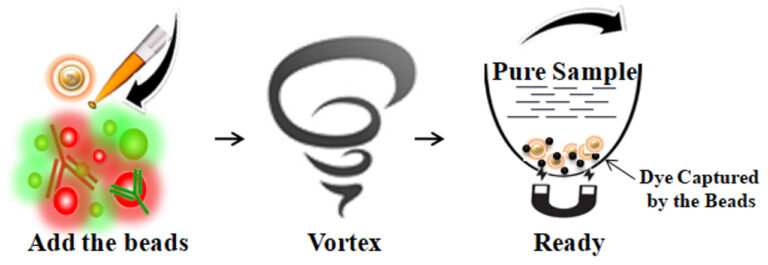
Explore Product
Lipids are a family of organic compounds that include monoglycerides, diglycerides, triglycerides, etc. The presence of lipids in the biological sample is usually poorly compatible with many downstream applications, including ELISA, protease digestion of proteins, isoelectric focusing, and mass spectrometry (MS). To enable downstream analysis, it is critical to remove the lipids from the biological sample, such as ascites, serum, cell & tissue culture, bile, and organ homogenates. For such purposes, traditionally, chloroform or column has been the preferred method for Delipidation. However, using the solvent removal agent or spin column to remove the lipids is tedious, timing-consuming, suffering from sample losses and environmental concerns, and challenging to adapt to high-throughput automation. We develop a novel, super-efficient lipid-specific removal agent based on magnetic beads to overcome these limitations.
BcMag™ One-Step Lipids Removal Kit is specially designed magnetic beads that efficiently bind and remove lipids from ascites, serum, cell & tissue culture, bile, and organ homogenates. The beads enable 96 samples to be processed simultaneously in less than 10 Minutes. The convenient single-step, one-tube purification protocol takes only 2 Minutess with very little hands-on time.
Workflow
1.
Add the beads to a sample solution.
2.
Mix the beads with the sample by vortex or pipetting.
3.
Magnetically remove the beads.
4.
Aspirate the supernatant containing a lipid-free sample.

Explore Product
The presence of protein and lipids in biological fluid samples frequently interferes with small molecule analysis, decreasing accuracy and sensitivity. Numerous bioassays need the removal of proteins (deproteinization) and lipids (Delipidation) from samples before analysis, such as LC/MS/MS analysis.
Precipitation using trichloroacetic acid, perchloric acid, phosphotungstic acid, acetonitrile, methanol, and other organic solvents has been extensively used for deproteinization over the last half-century. However, these procedures are not only tedious, time-consuming, and challenging to adapt to automation but also inefficiently remove lipids and nucleic acids.
BcMag™ One-Step Deproteinizing kit provides a novel solution for simultaneously removing proteins, lipids, and nucleic acid from biological fluid samples such as cell lysis, plasma, serum, tissue homogenate, and urine for analysis of a variety of small molecules. The superparamagnetic magnetic beads efficiently utilize the proprietary matrix to bind proteins and lipids in the sample. The one-Step protein removal protocol is straightforward: one step, one tube, no precipitation, no filtration, and no centrifugation. The resin enables 96 samples to be processed simultaneously in less than 10 Minutes.
Workflow

Explore Product
Human serum or plasma contains a wealth of proteomic information and is frequently analyzed for protein biomarkers of normal and pathological states. The extensive concentration range of proteins contained in human serum is one of the most challenging obstacles in studying it. Proteins that are abundantly expressed, such as albumin and IgG, account for 70 percent of total protein in serum/plasma. In contrast, protein biomarkers may present considerably lower amounts (pg/ml). High-abundance proteins pose problems for analytical procedures like one-dimensional and two-dimensional electrophoresis, high-performance liquid chromatography, and mass spectroscopy because they hide the less abundant proteins of interest. High abundant proteins must be effectively, reproducibly, and extracted explicitly from blood samples to correctly detect the lower abundant proteins. The selective removal of albumin from human samples (e.g., plasma, serum, urine, or cerebrospinal fluid) is necessary before performing proteome analysis, particularly when using mass spectrometry.
BcMag™ Quick Albumin Removal Kit and BcMag™ Quick HSA/IgG Depletion Kit are based on our unique magnetic beads modified with our proprietary chemistry for quick and easy removal of albumin or both albumin and IgG from serum and plasma samples. The beads bind to all other proteins in the sample (except albumin and IgG) in particular buffer conditions, allowing the binding and release of all less abundant proteins but albumin and IgG. The enriched and eluted proteins can be used for downstream applications such as proteome analysis, biomarker detection, enzyme assays, SELDI analysis, protein array pixelation, 1D and 2D gel electrophoresis, LC/MS, and MALDI-TOF MS.
Workflow
Work with the Albumin/IgG Removal Kit is straightforward.
1.
Mix the beads with serum or plasma samples and incubate them with continuous rotation. The beads remain suspended in the sample solution during mixing, allowing all other proteins in the sample (except albumin and IgG) to bind to the beads.
2.
After incubation, the beads are collected and separated from the sample using a magnet rack. Then the bound proteins are eluted.
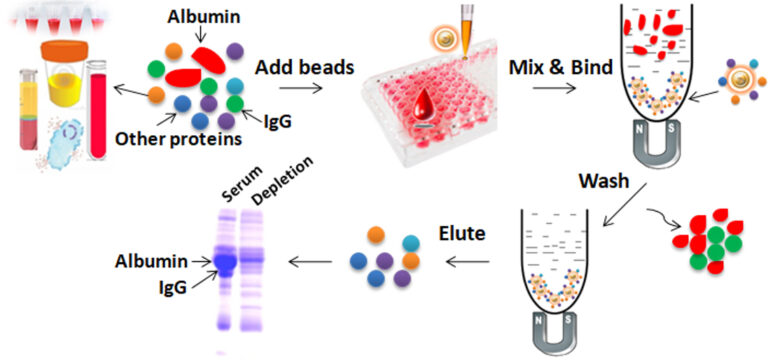
Explore Products
Endotoxins, also known as Lipopolysaccharides (LPS), are a type of pyrogen with large complex molecules. LPS is made up of an inner core of hydrophobic fatty acid groups and an inner and outer region of hydrophilic polysaccharides (Fig.1). LPS is a component of the outer membrane of gram-negative bacteria pathogens’ cell walls (such as Escherichia coli, Salmonella, Shigella, Pseudomonas, Neisseria, Haemophilus influenzae, Bordetella pertussis, and Vibrio cholera ). They release into the circulation upon disrupting the intact bacteria (death, cell lysis).
Endotoxins are major contaminants found in commercially available biological products, which often adversely affect the study of the biological effects of the main ingredient. Gram-negative bacteria (e.g., Escherichia coli) are widely used in the biotechnology industry to produce recombinant products such as proteins, plasmid DNAs, and vaccines. These products can be contaminated with endotoxins at any point within the process. Removing Endotoxin from the product is critical since it can result in multiple pathophysiological effects, such as fever, shaking chills, septic shock, toxic pneumonitis, and respiratory symptoms lethality.
BcMag™ Quick Endotoxin Removing Kit uses a magnetic microsphere covalently immobilized with a high density of polymixin B to remove Endotoxin from biological samples. It is specially designed for quick Endotoxin removal from various sample types. Polymyxin B, a peptide antibiotic, has a very high binding affinity for the lipid A moiety of most endotoxins. The microspheres combine all the advantages of affinity protein purification (low costs, simplicity, high specificity, and capacity) and magnetic properties to perform efficient manual or automatic quick high-throughput Endotoxin removal.
Workflow
The purification with magnetic microparticles is straightforward.
1.
Mix the microparticles with the sample and incubate them with continuous rotation for a sufficient time. During mixing, the beads remain suspended in the sample solution, allowing the endotoxins to bind to the immobilized polymixin B.
2.
After incubation, the beads are collected and separated from the sample using a magnet rack. Transfer the endotoxin-free supernatant to a fresh tube.
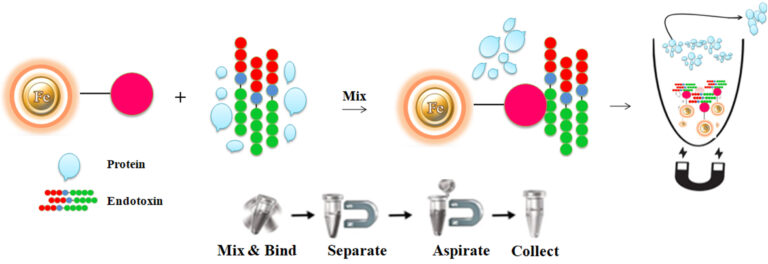
Explore Product
BcMag™ One-Step PCR Cleanup Kit is a specially designed kit for ultrafast and efficient purification of post PCR or other DNA reactions. The protocol is not only straightforward (one tube and one step, as shown in following picture) but also very flexible in removing different size DNA fragments by adjusting processing time, buffer’s pH, and detergent concentration. The magnetic Beads are added directly to the finished PCR reactions or other DNA reactions and mixed by a vortex mixer or pipetting to capture and remove the impurities (e.g., excess primer, dimer, adapter, salt, detergent, dNTPs, and enzyme). After mixing, the beads are magnetically removed, while the supernatant contains the purified and ready-to-run products. In just 1 minute, the purified DNA is ready for downstream applications, such as Sanger Sequencing, Restriction Digestion, Cloning, SNP Detection, or Library Preparation for NGS. The beads enable 96 samples to be processed simultaneously in less than 10 minutes.
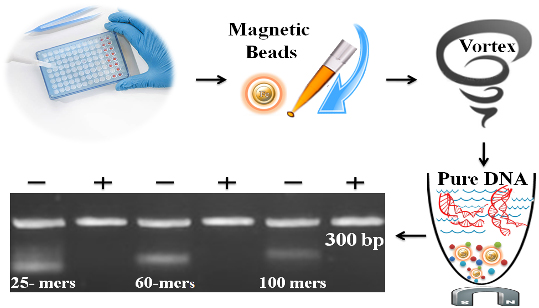
Features and Advantages
●
Simple protocol: No liquid transfer, One-tube, One-step
●
Ultrafast: One-minute protocol
●
Higher purity and recovery > 90% DNA
●
●
Cost-effective: Eliminates columns, filters, laborious repeat pipetting, and ethanol
●
High-throughput: Compatible with many different automated liquid handling systems
Explore Product
Workflow
The protocol is straightforward and fast: one tube, one step, and one Step. Add the magnetic beads directly to the pre-purified DNA samples and vortex or pipette to capture and remove the impurities. After vortexing/pipetting, the beads are magnetically removed, while the supernatant contains the purified and ready-to-run products. Unlike standard bind-wash-elute protocol, this convenient procedure does not contain traces of organic solvents, chaotropic salts, or EDTA and is almost 100% DNA recovery. The beads enable 96 samples to be processed simultaneously in less than 10 Minutes with cost-effective lab vortex mixers.
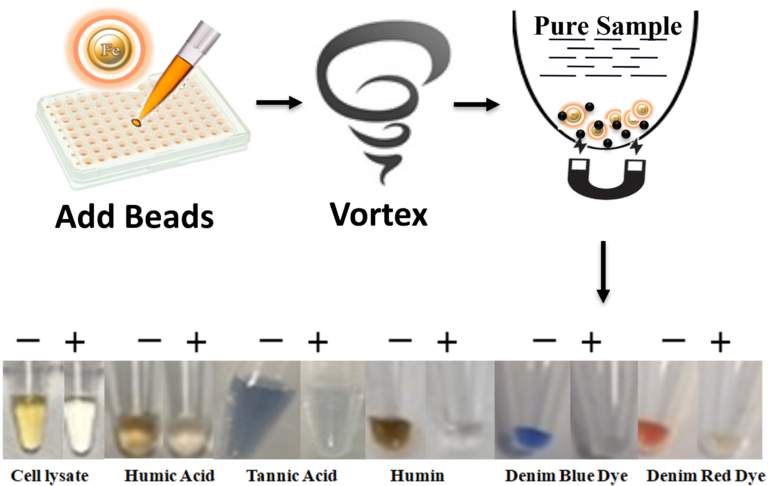
Explore Product
The protocol is straightforward and fast: one tube, one step, and one Step. Add the magnetic beads directly to the pre-purified DNA samples and vortex or pipette to capture and remove the impurities. After vortexing/pipetting, the beads are magnetically removed, while the supernatant contains the purified and ready-to-run products. Unlike standard bind-wash-elute protocol, this convenient procedure does not contain traces of organic solvents, chaotropic salts, or EDTA and is almost 100% DNA recovery. The beads enable 96 samples to be processed simultaneously in less than 10 Minutess with cost-effective lab vortex mixers.

Features and Advantages
●
Simple protocol: No liquid transfer, One-tube, One-step
●
Ultrafast: One-minute protocol
●
Higher purity and recovery > 90% DNA
●
●
Cost-effective: Eliminates columns, filters, laborious repeat pipetting, and ethanol
●
High-throughput: Compatible with many different automated liquid handling systems
Explore Product
BcMag™ One-Step Fluorescent Labeling Cleanup Kit has specially formulated resin with proprietary surface chemistry. It removes the excess free (non-conjugated) fluorescent dyes, primer, dimer, adapter, salt, detergent, labeled dNTPs, dNTPs, and enzymes from the finished labeling reaction. The protocol is not only straightforward but also very flexible in removing different size DNA fragments by adjusting processing time, buffer pH, and detergent concentration (table1). Compared with the dye removal columns, the resin can quickly and efficiently remove free dyes from the sample with just a single step and enables an individual or 96 samples to be processed simultaneously in less than 1 or 10 minutes with very little hands-on time. Since the magnetic resin only adsorbs the free dye, primer, dimer, adapter, salt, detergent, dNTPs, and enzyme, the labeled DNA/RNA rate is exceptionally higher than >90%. Moreover, the magnetic beads can remove most of the dyes if the appropriate amount of samples and buffer conditions are used (Table 1).
Table 1
Fluorescent Dyes
Binding Capacity
ng /mg beads**
Fluorescent dyes
Binding capacity
ng /mg beads**
Alexa Fluor 546 C5-Maleimide
99.7
Alexa Fluor™ 514 NHS Ester
45.2
Cyanine 3 carboxylic acid
99.1
Cyanine 5 carboxylic acid
49.7
Cyanine 3 amine
99.3
Cyanine 3.5 carboxylic acid
99
Cyanine 5.5 amine
99.8
Cyanine 5.5 carboxylic acid
99.7
Cyanine 5 amine
49.85
Sulfo-Cyanine 5.5 amine
99.9
Sulfo-Cyanine3 amine
93.3
Sulfo-Cyanine5 carboxylic acid
24.9
DyLight™ 488 NHS Ester
90.5
DyLight™ 633 NHS Ester
87.4
Dylight 680-4x PEG NHS Ester
99.8
DyLight™ 405 NHS Ester
99
Oregon Green™ 488 carboxylic acid
84.2
FAM amine, 5-isomer
24.57
Rhodamine 5B amine
99.2
Texas Red™ hydrazide
890
Cibarcron blue F3GA
99.7
Fluorescein isothiocyanate
120.3
Bromocresol purple
105.2
Phenol red
99.5
Denim red
101
Bromophenol blue
99
Denim blue
104.2
102.4
Fluorescent Dyes
Binding Capacity
ng /mg beads**
Alexa Fluor 546 C5-Maleimide
99.7
Alexa Fluor™ 514 NHS Ester
45.2
Cyanine 3 carboxylic acid
99.1
Cyanine 5 carboxylic acid
49.7
Cyanine 3 amine
99.3
Cyanine 3.5 carboxylic acid
99
Cyanine 5.5 amine
99.8
Cyanine 5.5 carboxylic acid
99.7
Cyanine 5 amine
49.85
Sulfo-Cyanine 5.5 amine
99.9
Sulfo-Cyanine3 amine
93.3
Sulfo-Cyanine5 carboxylic acid
24.9
DyLight™ 488 NHS Ester
90.5
DyLight™ 633 NHS Ester
87.4
Dylight 680-4x PEG NHS Ester
99.8
DyLight™ 405 NHS Ester
99
Oregon Green™ 488 carboxylic acid
84.2
FAM amine, 5-isomer
24.57
Rhodamine 5B amine
99.2
Texas Red™ hydrazide
890
Cibarcron blue F3GA
99.7
Fluorescein isothiocyanate
120.3
Bromocresol purple
105.2
Phenol red
99.5
Denim red
101
Bromophenol blue
99
Denim blue
104.2
102.4
Workflow
The one-minute dye removal protocol is straightforward.
1.
Add the beads directly to the sample.
2.
Pipette or vortex to capture the free dye.
3.
Magnetic separation of the beads from the protein solution, while the supernatant contains the purified and ready-to-run products.

Features and Advantages
●
Simple protocol: No liquid transfer, One-tube, One-step
●
Ultrafast: One-minute protocol
●
Higher purity and recovery > 90% DNA
●
●
Cost-effective: Eliminates columns, filters, laborious repeat pipetting, and ethanol
●
High-throughput: Compatible with many different automated liquid handling systems
Explore Product
BcMag™ One-Step NGS Cleanup Kit is specially designed for ultrafast and efficient purification of DNA after adaptor ligation and PCR or possible replacement of size selection procedure after adaptor addition. The protocol is not only straightforward (one tube and one step) but also very flexible in removing different size DNA fragments by adjusting processing time, buffer’s pH, and detergent concentration. The magnetic Beads are added directly to the finished PCR reactions or other DNA reactions and mixed by a vortex mixer or pipetting to capture and remove the impurities (e.g., excess primer, dimer, adapter, salt, detergent, dNTPs, and enzyme). After mixing, the beads are magnetically removed, while the supernatant contains the purified and ready-to-run DNA. In just 1 minute, the purified DNA is ready for downstream applications, such as Sanger Sequencing, Restriction Digestion, Cloning, SNP Detection, or Library Preparation for NGS. The beads enable 96 samples to be processed simultaneously in less than 10 minutes.

Features and Advantages
●
Simple protocol: No liquid transfer, One-tube, One-step
●
Ultrafast: One-minute protocol
●
Higher purity and recovery > 90% DNA
●
Effective Cleanup: Removes excess primer (<100-mer ssDNA), dimer, adapter, a salt such as Mg2+, detergent, dNTPs, enzymes, and dye
●
Cost-effective: Eliminates columns, filters, laborious repeat pipetting, and ethanol
●
High throughput: Compatible with many different automated liquid handling systems
Explore Product
BcMag™ One-Step RNA Removal Kit uses magnetic beads conjugated with a high purity of Ribonuclease A. Ribonuclease A is an endoribonuclease that originates from the bovine pancreas. RNase A is a single-chain polypeptide with a molecular mass of 13.7 kDa. RNase A is an endoribonuclease that unspecifically degrades ribonucleic acid (RNA) into smaller components. The magnetic bead immobilized with RNase A can efficiently remove RNA from biological samples with no nucleases remaining in the solution due to the nuclease stably and covalently conjugated with the magnetic beads.

Explore Product
BcMag™ Single-Stranded DNA Removal Kit uses magnetic microspheres covalently conjugated with a high purity of Exonuclease I (ExoI) to remove single-stranded DNA from the solution. ExoI is derived originally from E. coli. This enzyme is a 55 kDa exonuclease that hydrolyzes single-stranded DNA(ssDNA) step-wise in a 3’→5′ direction. This Exonuclease is highly specific for single-stranded DNA and does not react with double-stranded DNA or RNA and DNA strands with terminal 3′-OH groups blocked by phosphoryl or acetyl groups. Exonuclease I is tolerant of a wide range of buffer conditions and can typically be added to PCR. reactions. The Exonuclease I can be inactivated by heat treatment at 80°C for 15 minutes. The magnetic bead immobilized with ExoI can efficiently remove single-stranded DNA, such as PCR primer, from reactions with no nucleases remaining in the solution due to the nuclease being stably and covalently immobilized with the magnetic beads.

Explore Product
BcMag™ One-Step Sequencing Cleanup Kit is specifically designed for fast and efficient purification of the post-Sanger Sequencing reaction. The entire protocol takes only one tube and is complete in less than 5minutes. The magnetic beads are added directly to the finished sequencing reactions and vortexed to capture the impurities (e.g., unincorporated dyes, dNTPs, residual salts, and other interfering components). After vortexing, the beads are magnetically captured, while the clean supernatant can be directly loaded onto a capillary sequencer.

Explore Product
BcMag™ One-Step DNA & RNA Removal Kit uses magnetic beads conjugated with ultra-pure recombinant endonuclease to remove DNA and RNA. The recombinant endonuclease is encoded by the same gene of Merck Benzonase nuclease or TurboNuclease of Serratia macescens produced in E. coli. This nuclease nonspecifically digests all kinds of DNA and RNA, including variants of single- and double-stranded, circular, linear, or supercoiled DNA and RNA to 5″-phosphorylated oligonucleotides of 2-8 bases in length and is free of protease activity. The nuclease immobilized magnetic bead can efficiently remove all the nucleic acids (DNA and RNA) from protein solution with no endonuclease remaining in the solution due to the nuclease stably and covalently conjugated with the magnetic Beads.
Workflow

Applications
An immobilized nuclease bead is ideal for removing nucleic acid contamination from purified proteins or other sample preparations.
Features and Advantages
●
Efficient one-tube and extraction-free protocol.
●
Ultrafast: Process 96 samples in less than 30 minutes with <10-second Hands-on Time.
●
Nuclease Recovered at the end of the reaction thereby can be reused.
●
Easy separation of the endonuclease from the protein sample.
●
Stability of the immobilized endonuclease increases.
●
Cost-effective: Eliminates columns, filters, laborious, organic reagents, and minimal plasticware required.
●
High-throughput: Compatible with many different automated liquid handling systems.
Explore Product
EDTA is an abbreviation for ethylene-diamine-tetraacetic acid. EDTA is a polyprotic acid with four carboxylic acid groups and two amine groups with lone pair electrons. It is frequently used to chelate divalent cations and is widely utilized in biochemistry and molecular biology.
BcMag™ EDTA Metal Ion removal Kit uses magnetic particles coated with high-density EDTA (Ethylene Diamine Triacetic Acid) functional groups on the surface to remove metals. The beads chelate metal ions such as As, Ca, Cu, Gd, La, Ni, Se, Zn, Co, Fe, Mg, Pd, Pt & Rh, etc. The beads are an excellent tool for removing the divalent cations from the buffer.
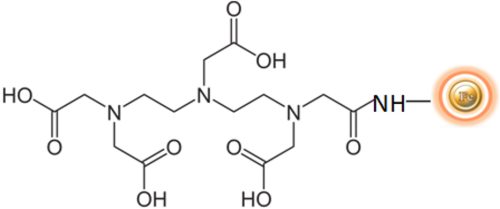
Features and Advantages
●
Quick, Easy, and one-step high-throughput procedure to chelate metal ions;
Eliminates columns or filters, and a laborious repeat of pipetting or centrifugation
●
High capacity
●
Reproducible results
Ethylene glycol tetraacetic acid (EGTA) is a chelating agent and a polycarboxylic amino acid. EGTA has a stronger affinity for calcium ions but a lower affinity for magnesium ions than EDTA. EGTA, like EDTA, can be used as a buffer to simulate the pH of a living cell. Because of this feature, EGTA can be used in Tandem Affinity Purification, a protein purification process. EGTA has a higher boiling point than EDTA.
BcMag™ EGTA Metal Ion Removal Kit uses magnetic beads coated with high-density EGTA (Ethylene glycol tetraacetic acid) functional groups on the surface (Fig.18). Compared to EDTA, EGTA has a higher affinity for calcium ions but a lower affinity for magnesium ions. The EGTA beads are an ideal tool for removing the metal ions such as Ca, As, Gd, La, Ni, Se, Zn, Co, Fe, Mg, Pd, Pt & Rh, etc.
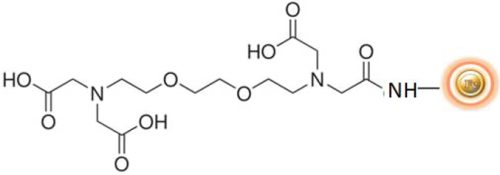
Explore Products
BcMag™ Immobilized TCEP Disulfide Reducing Kit (TCEP reducing magnetic resins) is specifically designed to efficiently reduce disulfide bonds in proteins, peptides, and other disulfide bond-containing molecules. TCEP ([tris(2-carboxyethyl) phosphine] reducing magnetic resins avoid the need for time-consuming and resin, spin column and gravity-flow column procedures to separate the reduced sample from the reducing agent.
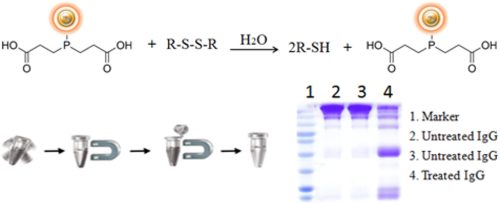
Explore Product
Get the Latest News and Updates by Email
6393 Nancy Ridge Dr. Suite A
San Diego, CA 92121 USA
Fax: +1-858-909-0057
Get the Latest News and Updates by Email
© 2023 Bioclone Inc. All Rights Reserved.